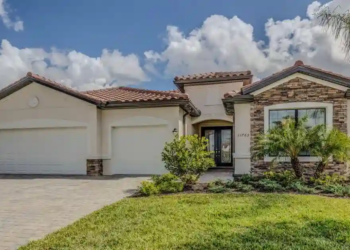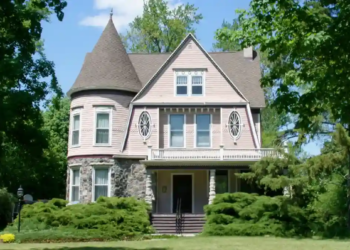Buyer beware for property red flags! Check out Part 2 of Property Red Flags from our guest blogger Julie Broad from revnyou.com. Click here for Part 1.
Red Flags to Watch For
Internal Noise
This is a big one … especially if you’re buying a home with a suite as a mortgage helper or if you’re planning to rent all the suites out.
Do what you can to test the sound transfer between units. Have one person go into one unit while the other person goes into an adjacent unit. Yell, slam doors, and otherwise just be noisy. See how little (or how much) noise it takes to disturb the folks in the other unit. If a lot of noise can be heard from one unit to the next, you’ll find that you will have more tenant disputes and tenant turnover. There are things you can do to reduce the sound transfer, but most options are expensive and not 100% effective.
In the older homes, noise can be a real problem. Old construction methods really didn’t prevent sound transferring from floor to floor. Covering hardwood floors with carpet and a thick underlay will reduce some of the noise. But the real fix is with insulation and that is expensive.
The other culprit when it comes to noise transference is the ducts for the furnace. You’ll find a ton of sound travels through the ducts.
External Noise
I used to live in a small apartment by Joyce sky train station in Vancouver. People say you get used to the noise when you live by something like that, but I never really fell asleep until the train stopped running around 1:30 or 2:00am.
The property was newly constructed; the windows were double-paned; and it was as sound proof as you could get; but it was noisy and I happily moved out after six months.
Properties by a major road, or public transportation, or a fire station could all be problematic. And this noise is something that you have no control over.
Neighbourhood
There was a lot of fuss in Toronto last year because a condo development went up near a Quality Meats packing plant. The residents were complaining about the smell in the summer and some of the other things folks found unpleasant about being near a slaughterhouse. The thing is – the plant had been there 80 years. A little due diligence on the neighbourhood would have revealed this was down the road.
Your neighbourhood may change over the years. Your neighbours almost certainly will. But, if you move in beside a garbage transfer station or you buy an investment property in a rough area know that you don’t have control over the changes that may occur. Your best bet is to spend a lot of time walking around, asking residents questions, and visiting the area at multiples times of day (things look a lot different at night!).
Parking
Extra parking can be an opportunity. In Alberta, a lot of investors rent out separate garages for as much as $200/month. That’s great added income without much added expense! We didn’t have a car when we lived in a condo in Toronto so we rented our space to another resident in the building who had two cars for $800/year.
The opposite is also true. Lack of parking for a property reduces your potential tenant pool, lowers your cash flow, and increases tenant turnover.
Storage
Similar to parking, if you don’t have any place for your tenants to store their belongings (think golf clubs, bikes, skis, snowboards), they will be unhappy. And you don’t want those items stored inside your unit because they will cause a lot of wear and tear. Also, if you have extra storage, it can be rented out for additional income.
And it’s not just about renters. The lack of parking or storage will impact your resale value.
Design and Layout
Design often comes down to personal preference, but there are layouts that have good flow and ones that don’t. When you walk in a home and it has a good feel, it’s often because of an open layout. The layout allows for good light flow and easy, functional living. Bad flow makes you feel cramped or constrained, and it often makes a place seem dark and out of sorts. You will usually just know it when you see it. What is more difficult is to know WHY you feel that way and whether you can easily fix it.
If you’re not sure whether a property has a good flow or not, and you don’t feel like you understand this, speak with a few people who might be able to explain some key elements to you. Good realtors will understand a lot of this, but interior designers and home stagers can explain a lot of these concepts really well.
If you’re buying real estate, you’re putting a lot of your cash into this expenditure. There are a lot of things out of your control in real estate so try to avoid as many of these problems you can’t control from the start. You are making an investment only if there is a reasonable probability that you will be able to make money when you sell. Buy every property with that in mind.
—
Julie Broad is a residential real estate investor in Nanaimo, BC, a #1 Amazon Best Selling author, speaker and investing coach. Connect with her at her website www.revnyou.com where she shares hundreds of videos, articles and real estate investing tips to help you in your business.













